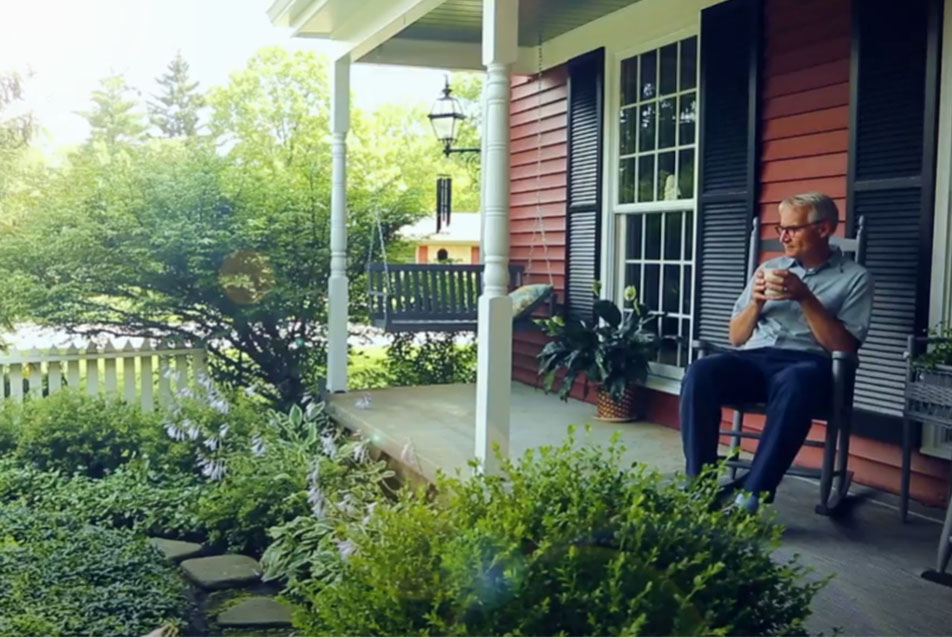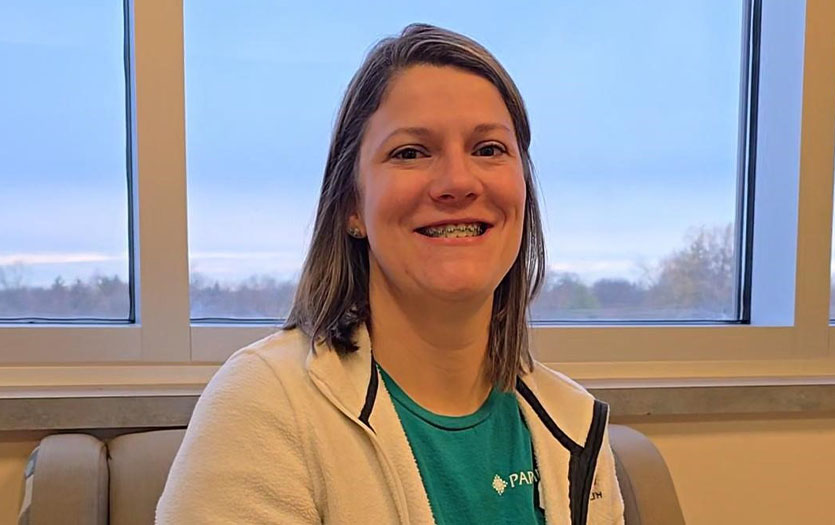There is a bird bath that sits in front of the home of Dave Johnson, PhD, RN, LMFT, employee assistance specialist. It represents the elements – air, water, earth, fire – but also, it represents the undeniable power of awareness and connection.
When Dr. Dave was just 16 years old, working as an orderly at a local hospital, he was asked to assist with a young female patient. “I looked down, into her heavily mascaraed, sad eyes,” he recounted. “And it was so powerful.” On that day, as a young man, Dr. Dave had a hand in saving that teenage girl’s life. Then, just shy of a decade later, while out with a group of friends, he met those same heavily mascaraed, sad eyes. While he immediately recognized her face, the two did not speak. Then, shortly after beginning his family, Dr. Dave spotted the bird bath in a yard sale. “I pulled over and, when I went to ask about the price, I looked up to meet those same heavily mascaraed eyes. Would you believe it?” Only this time she thanked him for what he did for her all those years ago. And the sadness seemed to have dissipated from her eyes. “When I see this bird bath, I’m reminded of the synchronicity of noticing.”
Cultivating mindfulness
In fact, most of the items found in and around Dr. Dave’s home bring something special to mind. He’s been in the house, located near Foster Park, for 22 years, and worked with a landscape architect to develop the beautiful botanical aesthetic. These days, on his two porches and in his sprawling gardens, Dr. Dave savors time with the people he values most: his wife, six children and nine (soon to be 10) grandchildren.
When he finds himself alone in these precious spaces, Dr. Dave practices both formal and informal meditation. These everyday acts of mindfulness might include drinking his coffee, walking on the stones in the labyrinth, or observing friendly hummingbirds. As Dr. Dave explained, the tools for us to practice such meditations – cues to come to our sensory awareness – are everywhere. A lawnmower, for example, might trigger us to breathe in the summer scent of freshly cut grass. Wind chimes, the buzz of a bug’s wings, birds chirping … these are all gateways to intentional awareness.
“It’s important to cultivate spots in and around your home that encourage you to be mindful,” Dr. Dave said. “It could be a porch, or a chair or cushion, or even in the shower.” Capitalizing on these informal moments is one step toward a greater connection to the present, but they’re even better as a complement to a formal practice (15-20 minutes of sitting per day).

Home is where the anxiety is
While the idea of practicing mindfulness at home is lovely, for many, walking through the door at the end of the day sparks stress. After all, there are children to feed, and dishes to clean and laundry to put away. “You have to stop identifying with housework.” Dr. Dave said. “Take 6-10 breaths to come out of your head and connect with the present. This really is the most important part of your life.” Instead of letting your mind trail off to follow the million tasks you have to complete, Dr. Dave recommends looking into your spouse’s eyes just a bit longer, instead. “Every candle burning, every piece of art on the wall, every little voice down the hall, every corner of every room is an opportunity to cultivate awareness.” When you feel anxiety taking over, tap into the sights, sounds, textures, tastes and smells that reunite you with the moment.
The breath
It can also be helpful to notice what activates you. What are the actions or items that elicit a reaction – good or bad – and how can you address or incorporate them into your mindfulness practice. Observe any tightness in your chest or jaw. Any discomfort or negative feelings. Any changes to your thoughts. Then, come back to your breath.
“Breathing is portable. We take it with us,” Dr. Dave said. “Then, of course, there are those moments that take our breath away. Most people don’t realize that 99.9 percent of the time our body breathes us. It’s an autopilot response. But when we can come to our awareness and breathe our body, then we can truly find a healthier flow.”
Try practicing mindfulness at home today:
- Stand in the window with your favorite view and feel the warmth of the sun coming through on your skin. What does that sensation remind you of?
- Sit on your porch and close your eyes. What do you hear? How far away are the sounds you hear?
- Sit on the ground next to your garden. What do you see? Are there bugs crawling? Observe any changes to the earth and the plants.
- Curl up on the couch with a warm cup of coffee. How does it feel in your hands? What does it smell like? Taste like?
Mindfulness-based stress reduction practice has been extensively researched and proven helpful for coping with changes, grief, healthy eating patterns, pain, anxiety, depression and many other chronic disease and autoimmune disorders. For more on stress management programs or 1:1 stress coaching with Dr. Dave, contact the Parkview Center for Healthy Living at (260) 672-6500. He also provides on-site guidance for teambuilding, emotional intelligence, and transformational leadership, among other topics. To learn more about Employees Assistance Programs for your company, or enroll in our upcoming seminar, Leadership During Crazy Times: The Zen of Renewal through Mindfulness, call Parkview Business Development at (260) 373-9013.
Read more from Dr. Dave:
The power of walking meditation
Learning to drop the bananas and cope
How to make meal time an exercise in mindfulness
Follow Dr. Dave.
Facebook: Invisible Inklings
Twitter: @davejohnson2



